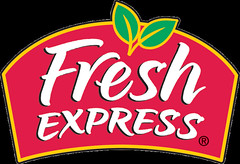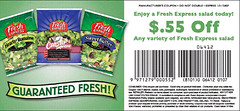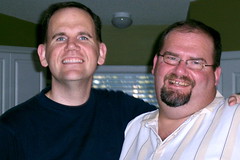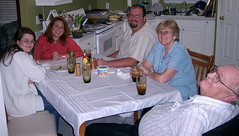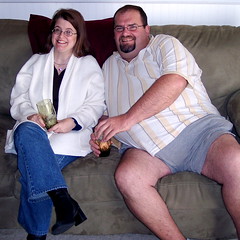Weight Watchers Group Captivated By Low-Carb Weight Loss Success
When I lost 180 pounds on the Atkins diet in 2004, I had no idea at the time that I would be writing about low-carb living, weight loss, and health in a blog and talking about it in a weekly podcast show two years later. All I know is that my life was forever changed and the ripple effects soon began in earnest. It commenced immediately in my own spheres of influence, then spread into my community with exposure in the local media, and finally got out there nationally and internationally when I started blogging and published my book about my weight loss.
Now I'm privileged to see some of the people I have been able to come into contact with telling others about livin' la vida low-carb with unbelievable results. One such example of this came to me in my e-mail inbox from a regular reader on Wednesday.
This person is a Type 2 diabetic who has lost 90 pounds on the low-carb lifestyle and wanted to show his support for a co-worker who joined Weight Watchers. Although he does not support the nutritional approach of the Weight Watchers program, he wanted to be a part of the group for "mutual support."
Not surprisingly, the members of the group wanted to know more about his amazing weight loss success and how he has been able to control his diabetes through his diet.
"I was pretty nervous about how it would be received. I especially didn't want to come across as bashing Weight Watchers."
So, he took the plunge and simply shared from his heart about how he battled with weight problems his entire life going on diet after diet, including Weight Watchers, and that none of them worked for him. He made it very clear that he is not against Weight Watchers for those people who can do it and succeed.
"It wasn't the best approach for me," he told the Weight Watchers group.
As he continued talking about his neverending battle with obesity because he was always hungry and craving food, my reader told them that he threw his hands up in the air and just gave up trying to lose weight in the Summer 2005. But then it happened--January 2006 he was diagnosed with Type 2 diabetes!
When he was educated about how to best control his diabetes, he was told he would need to follow the USDA-recommended Food Pyramid which he had tried and failed with a million times before.
"But I soon came to my senses that they were telling me to continue doing what I was doing before. I started looking for alternatives."
The alternative he found was the low-carb lifestyle and he explained how low-carbers eat a very healthy diet with lots of delicious and nutritious vegetables. As he was sharing the truth about low-carb to the Weight Watchers group, he could see they were being enlightened with information they had never heard before from the media and the so-called health "experts."
When he was summarizing his story, my reader started sounding like me.
"There is no one-size-fits-all approach. Whatever you do, make it a lifestyle. Sugar and refined carbohydrates are bad for weight loss. Eat nutrient-dense foods. And finally, low carb is a viable option and the best approach for some people."
He mentioned that there are many stories of low-carb weight loss success on the Internet in blogs and forums and he even showed them the front cover of my book as an example of someone who has overcome his lifelong battle with morbid obesity. Whoa, cool!
My reader was so excited when he was finished because that group of Weight Watchers devotees gave him a thunderous round of applause in gratitude for sharing his success with them. I am confident eyes were opened that day with the honest truth presented in a non-threatening manner was shared with them.
"It turned out well and will help everyone understand where I am coming from. I think I gave them a different perspective on low carb."
Indeed it did, my friend, indeed it did! That's kinda what this former Weight Watchers follower discovered when she started on low-carb with great success. Stories like these are so exciting to hear and I invite you to share any similar experiences you may have had talking about livin' la vida low-carb with a friend, family member or in front of a group.
If we are going to change our culture, then it will take each and every one of us sharing the knowledge and hope that we have found with those who need to hear it. E-mail me your story at livinlowcarbman@charter.net.
Labels: diabetes, inspiration, low-carb, motivation, success, weight loss, Weight Watchers
